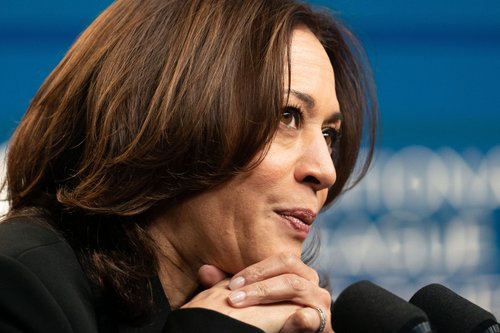Just how big is the LGBTQ+ wage gap?
Sep 18, 2023
6 mins


Journalist and editor
While LGBTQ+ rights have come a long way over the years, the events of the past few months remind us that there is still much more that needs to be done to achieve equality. In June, the conservative majority of the United States Supreme Court handed down a landmark decision on “free speech” that effectively allows businesses to refuse to serve LGBTQ+ customers. Justice Sonia Sotomayor issued a strong dissent, stating that she felt the decision was “profoundly wrong … Our constitution contains no right to refuse service to a disfavored group.” President Joe Biden went further, addressing the intersectional impacts the precedent will set, claiming it will weaken “long-standing laws that protect all Americans against discrimination in public accommodations – including people of color, people with disabilities, people of faith, and women.”
Outside of the spectacle of American politics, LGBTQ+ Americans also face danger and discrimination in their daily lives. Last month’s killings of O’Shae Sibley, for voguing outside a gas station in Brooklyn, and Laura Ann Carleton, for hanging a pride flag in front of her business in San Bernadino, California, serve as a grim reminder that LGBTQ+ Americans have more than court rulings to fear. Hate crimes have been on the rise in recent years, especially in the LGBTQ+ community, with such crimes increasing by 70% between 2020 and 2021.
These shocking occurrences have called national attention to the challenges many LGBTQ+ people face in the US, but they are not the full story. One seldom talked about form of discrimination is wage inequality, or the wage gap. So, what is the wage gap, what factors play a role, and what are the lasting effects of pay inequality for the LGBTQ+ community?
What is wage inequality?
The wage gap is the difference in median incomes across different groups. It does not refer to differences in pay between individuals or industries. Instead, it represents the macroeconomic inequalities between people of different genders, sexual orientations, races, etc. Wage inequality is discussed in terms of percentage, or cents on the dollar, with 100% and the one-dollar figure representing the wage earned by the average worker, or a privileged group, usually heterosexual, white, cisgender men. The wage gap is a useful tool for quantifying inequality and providing data that supports the lived experience of minority groups. However, it is underused when observing discrimination faced by some communities. You’ve probably heard about “the wage gap” in discussions around feminism, but the conversation usually fails to consider the broader, intersectional nature of the wage gap as something larger than the disparity between white, cishet men and women.
The tendency to ignore the intersectional nature of the data is a failure to accurately represent underreported groups, particularly the LGBTQ+ community. While there is still a lack of studies on the wage gap for gay, trans, and nonbinary workers, there are several recent studies illuminating the unique discrimination employees face in pay and beyond. This year, the Human Rights Campaign released a comprehensive study reporting on wage inequality for nearly every identity within the LGBTQ+ community. They analyzed the incomes of 7,000 Americans and compared the data with that of the Bureau of Labour Statistics and found that LGBTQ+ workers as a whole earn only 90% of the median weekly wage a typical employee earns. Trans, nonbinary people, and LGBTQ+ people of color get even less. Unsurprisingly, the poverty rate is also 6% higher for LGBTQ+ people than for their cishet counterparts. When you consider that the LGBTQ+ community (which openly constitutes nearly 10% of the American population) is inherently included in the national average, the real gap is likely greater than reported.
Gender-diverse workers earn the least, but binary gender still plays a role
While the LGBTQ+ community as a whole makes 90 cents on the dollar, it’s important to dig deeper into analyses of niche identities within the LGBTQ+ spectrum. As you might expect, disparities between different identities are positively correlated with inequalities observed with their cisgender, heterosexual counterparts as well. For instance, patriarchy still plays a part in the wage gap between different groups. When looking at cisgender, LGBTQ+ men and women, men made 96% of the median wage for a typical worker, while women made only 87%. Moreover, this trend remained for trans people who conform to the gender binary, with trans men making 10% more than trans women, although both groups still made less than their cisgender counterparts at 70 and 60 cents on the dollar, respectively.
When you expand the scope to include nonbinary workers, the inequality increases, with nonbinary and genderfluid people earning, on average, 70 cents on the dollar when compared to the majority of workers. Nonbinary people often battle erasure and lack of representation in research, and it doesn’t stop when it comes to economic analysis. Although more than 5% of Americans under 30 openly identify as trans or nonbinary, these identities are often excluded from or misclassified in data. For instance, studies focusing on gendered wage gaps often exclude nonbinary individuals from their data, instead categorizing employees as men or women only.
This fact returns to the issue that discussions surrounding the wage gap are often structured around dated ideals of second-wave feminism, failing to address the intersectional nature of wage inequality. Some trans-exclusionary feminists take issue with the inclusion of trans and nonbinary identities in the conversation, saying that acknowledging trans women and nonbinary people is an “erasure of women” and somehow degrades feminism. While the founding principles of the feminist movement would beg to differ, many women responded to the debate, stating that “respect for the wholeness of being a woman [is] stripped away by this ‘gender-neutral’ language,” and “the vast majority of us have gender identities aligned with our biological sex… [and] shouldn’t be denied our particular identity and its expression.” While the data to support these arguments doesn’t exist, wage inequality for trans and nonbinary people does, so it remains prudent to include these identities in analyses of gender-based discrimination.
Does race play a part?
Gender is not the only intersectional factor that influences the wage gap. One of the most significant factors of wage inequality is race, with white workers often earning the most. Like binary gender, race has long been included in the discourse around the wage gap, but it is rarely contextualized with the intersectionality of LGBTQ+ people of color. Unlike sexuality and gender identity, race is an inherited identity and people of color, on average, have less inherited socioeconomic capital, and more structural barriers tied to institutional racism and oppression that impact their wages.
The HRC found that while LGBTQ+ white workers earned 97% of what the typical worker makes, Latinx, Black, and Indigenous people earned only 90%, 80%, and 70%, respectively. Interestingly, LGBTQ+ Asian and Asian Pacific Islander workers earned about the same as a typical worker in the United States. Although Asian Americans have the highest earnings, they also have the greatest internal wage disparity, with the top 10% of Asian and API workers earning 10.7x as much as the bottom 10%. This anomaly is generally attributed to the Immigration Act of 1990, which Congress passed in order to attract highly skilled migrants to the US, leading to a boom in the tech industry. While LGBTQ+ Asian and API workers earn more than white employees, they still earn 12% less than their straight, cisgender peers, while white LGBTQ+ people only earn 3% less.
LGBTQ+ workers battle other forms of discrimination
LGBTQ+ workers battle more than just wage inequality in the workplace. One study found that most offices are not safe spaces for LGBTQ+ employees. In 2021, more than 45% of LGBTQ+ employees reported being treated unfairly at work, from wrongful termination to hiring discrimination and harassment. The discrimination extends past policy and hiring decisions, with more than two-thirds of people experiencing hate speech in the office. In light of these statistics, it comes as no surprise that nearly half of LGBTQ+ employees choose to remain closeted in the workplace. When looking at the data behind workplace discrimination, the question becomes: how is it tied to wage inequality, and what are the impacts?
What are the lasting effects?
It’s important to realize that the wage gap is not solely a result of LGBTQ+ people being paid less for the same roles, but a result of LGBTQ+ workers not being hired for well-paid jobs. Discrimination is one of the driving factors behind wage inequality in the US, and even if LGBTQ+ people overcome the barriers in the hiring process, they are still less likely to advance into higher-paying roles. Even though employment discrimination based on sexuality or gender identity is illegal, more than two-thirds of LGBTQ+ employees have reported leaving a job due to discrimination. This implies that discrimination is very nuanced and has more to do with culture than policy. This is an obstacle to career progression that cishet people do not face and is a clear component of wage disparity that receives little attention.
So, what can be done? LGBTQ+ people are not going to go away, so it is necessary to address these inequalities. The population is only expected to grow as younger generations enter the workforce. By 2030, it is estimated that 30% of workers will be Gen Z, a generation with the highest recorded percentage of openly LGBTQ+ identifying people. With 20% of people under the age of 25 identifying as LGBTQ+, the workplace is on the verge of a new wave of LGBTQ+ employees. To ensure that the wage gap doesn’t have as great of an impact on this younger, larger population, changes need to occur in every echelon of American society. While broader socioeconomic change is not so straightforward, organizations can take steps to be more inclusive. From diversity audits to cultural changes and new policies, there are many ways to combat LGBTQ+ discrimination in the workplace and aid in shrinking the wage gap.
Photo: Welcome to the Jungle
Follow Welcome to the Jungle on Facebook on LinkedIn and on Instagram and subscribe to our newsletter to get our latest articles every week!

More inspiration: DEI

Sh*t’s broken—Here’s how we fix work for good
Built by and for a narrow few, our workplace systems are in need of a revolution.
Dec 23, 2024

What Kamala Harris’s legacy means for the future of female leadership
The US presidential elections may not have yielded triumph, but can we still count a victory for women in leadership?
Nov 06, 2024

Leadership skills: Showing confidence at work without being labeled as arrogant
While confidence is crucial, women are frequently criticized for it, often being labeled as arrogant when they display assertiveness.
Oct 22, 2024

Pathways to success: Career resources for Indigenous job hunters
Your culture is your strength! Learn how to leverage your identity to stand out in the job market, while also building a career
Oct 14, 2024

Age does matter, at work and in the White House
What we've learned from the 2024 presidential elections about aging at work.
Sep 09, 2024
The newsletter that does the job
Want to keep up with the latest articles? Twice a week you can receive stories, jobs, and tips in your inbox.

Looking for your next job?
Over 200,000 people have found a job with Welcome to the Jungle.
Explore jobs